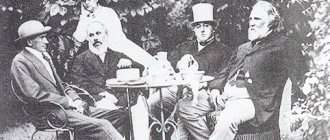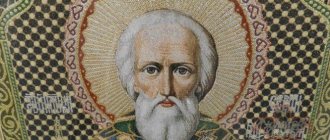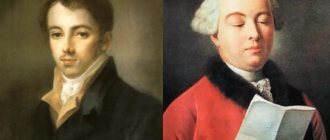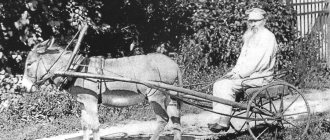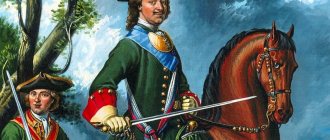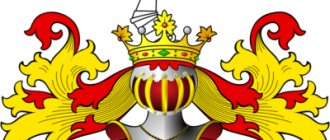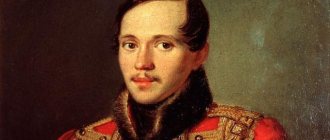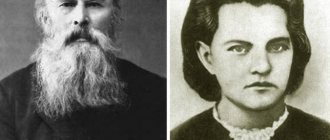early years
Born on January 17 (29), 1860 in Taganrog in the family of a merchant. From an early age, together with his brothers, Anton helped his father in his shop. Chekhov's childhood was spent in church holidays; every day the future writer sang in the church choir.
Training took place in a Greek gymnasium school, where little Chekhov entered the preparatory class in 1868. Then Anton Pavlovich began his studies at the University of Moscow at the Faculty of Medicine, from which he graduated in 1884. After this he engages in medical practice. During all the years of his studies, Chekhov had to work in every possible way: he was a tutor, collaborated with magazines, and wrote short humoresques.
Brief biography (details)
Chekhov Anton Pavlovich (1860-1904). My brother's brother, The Man Without a Spleen, A Ch-v, Antosha Chekhonte and dozens of other pseudonyms hid the real name and surname of the writer, whose works still have millions of fans. Anton Chekhov was born in Taganrog, in the family of a grocer. In 1868, he entered the Greek gymnasium, from which he graduated as an independent person. The fact is that his father went bankrupt and moved to Moscow, leaving his son with debts and settlements with creditors. While studying at the medical faculty of Moscow University, Chekhov wrote short stories for metropolitan magazines. And medical practice (in 1884 he became a doctor at the district hospital) provides extensive material for his pen. In the collection “Tales of Melpomene” the reader is presented with images of townspeople, officials, sextons and other miscellaneous people of the Russian Empire. In literary circles, the talent of the novice writer was noticed, and Chekhov received a lot of advice “not to waste money on small things.” His works become deeper, but the writer refused to work on a major novel. But his fame is growing: Anton Pavlovich is awarded the Pushkin Prize for the collection “Twilight” (1887). In the spring and summer of 1889, Chekhov travels across Siberia to the convict island of Sakhalin. Impressed by this trip, over the next five years he writes the book “Sakhalin Island”. Having settled in the acquired Melikhovo estate, the writer worked on the famous plays “Uncle Vanya”, “The Seagull”, and the story “Dragonfly”. In total, more than 40 works were written in Melikhovo. Worsening tuberculosis forces Chekhov to move to Crimea. He builds a big house, receives guests, fans of his talent specially come to Yalta closer to their idol. In 1901, Anton Pavlovich married the famous actress Olga Knipper. The spouses are forced to be away from each other: he is in Yalta, she is in Moscow. But they go on a trip to Europe together. On the night of July 2, Chekhov became ill. He asked to call a doctor and, unexpectedly, sparkling wine. “I haven’t drunk champagne for a long time...” - these were the last words of the great writer.
The beginning of a literary journey
Chekhov's debut in print took place in his first year at the institute, when the young writer sent his story and humoresque to the Dragonfly magazine. Chekhov's stories were first published as a book in 1884 (“Tales of Melpomene”). Chekhov's work of that period was significantly influenced by the works of L. Tolstoy.
Then, in Chekhov's biography, a long journey was made to Sakhalin (April-December 1890). There the writer studied the life of exiles. Chekhov's works “In Exile”, “Sakhalin Island”, “Ward No. 6” reflect his impressions of the trip.
Chekhov never considered himself a children's writer. However, he also had several works for children: “Kashtanka” and “White-fronted” - “two tales from a dog’s life,” as the writer himself put it in a letter to the publisher.
Report on Chekhov
Anton Pavlovich Chekhov was born on January 29, 1860 in the city of Taganrog.
Chekhov wrote almost nothing specifically for children. Only the story “White-fronted” is directly addressed to children; even the textbook “Kashtanka” was revised for young readers. He ironically defined children's literature as “so-called”; he did not consider it real literature; he ridiculed it for its poor language, second-rate nature, and unnaturalness. Best of all, he formulated what is still a discovery for many: “Children should be given only what is suitable for adults.”
Chekhov’s common phrase: “I had no childhood as a child” is certainly true. He had suffered enough from his stern father, an unsuccessful grocery store owner who often used rods. The children helped with the housework, sang in the church choir, causing affection to the adults, and at the same time feeling like “little convicts.”
The Taganrog boy had his own joys: the sea, the handsome Don, the steppe, reading, home performances, going to a real theater. There were also sorrows: boring studies at the gymnasium, the need to earn money to send it to Moscow, where the bankrupt father fled from debtor's prison along with the rest of the family. From the protracted gymnasium “imprisonment” (Chekhov stayed for the second year twice), came the funny nickname “Chekhonte”, which was awarded to him by the teacher of the Law of God, who “pleased” his mother with the message that nothing good would come of her children. How often such judgments are wrong!
In 1879, Chekhov entered the medical faculty of Moscow University. Again I had to study and work to support my family. The main income came from literature. The first publication of Anton Chekhov's stories “Letter to a learned neighbor” and “What is most often found in novels, stories, etc.?” (magazine “Dragonfly”, 1880).
His short stories flooded humor magazines and newspapers. He wrote so much that, in addition to the most famous pseudonyms: “Antosha Chekhonte”, “My Brother’s Brother”, “The Man Without a Spleen”, he came up with several dozen more. The author’s natural observation, the ability to turn almost any subject into the theme of a funny story, the liveliness of the language and the special “theatricality” of the stories, where the heroes, like actors on stage, played out their roles, made a huge impression on readers. Among his stories there are many true masterpieces. What, it would seem, can be learned from an ordinary case when a hero remembers the name of a person? And we revel in the author’s ingenuity, his ability to “stretch” the plot, cheerfully playing with details (“Horse Name”). And what a hilarious circus performance the writer turns fishing (“Bubot”) into! Chekhov did not have to look for themes and plots; life itself offered them. A practicing doctor, he saw different people, visited different places, crossed the whole country to work in the most terrible Russian prison on the island of Sakhalin. Gradually, humor disappears from his work. He writes about people who are hopelessly unhappy. Among the many heroes who evoke the author’s strongest, heart-pounding sympathy are children.
Vanka Zhukov, a nine-year-old boy apprenticed to a shoemaker (“Vanka”), in his heartbreaking letter to his grandfather, describing endless humiliation, begging “take me away from here, otherwise I’ll die,” crosses out the illusory hope of salvation by writing the address on the envelope “On grandfather's village Konstantin Makarych." The child does not know the address to which he should turn for help, there is no such address... In the story “Boys” one of the main Chekhov themes is the theme of failure, bad luck. Two high school students who gathered in America for gold seem funny. Their enterprise turned into a complete embarrassment: in the Gostiny Dvor of the nearest city, they asked where to buy gunpowder, and were caught. But Volodya’s feelings: pity for his mother, shame, repentance, fear of punishment are not funny at all. Warmth and light fill Chekhov's stories about children (“Grisha”, “In the Nursery”). The stories about a sick puppy warmed by a she-wolf (“White-fronted”) and about a dog lost in a winter blizzard (“Kashtanka”) are warmed with kindness and tenderness.
The boy Yegorushka (the story “The Steppe”) experiences a happiness rare for Chekhov’s heroes, discovering the vast, free beauty of nature... Acquaintance with these works of Chekhov allows us to better understand his adult prose and drama.
Other interesting works on this subject:
Report on Maxim Gorky
Later years. Death of a writer
After purchasing the Melikhovo estate, he carried out social activities, helping people (1892-1899). At that time, many works were written, including: Chekhov’s plays “The Cherry Orchard”, “Three Sisters”, “The Seagull”, “Uncle Vanya”. The production of “The Seagull” on the stage of the Moscow Art Theater in 1898 became a well-deserved triumph for Chekhov the playwright.
Then, due to tuberculosis, Anton Chekhov's biography is replenished with another move - to Yalta, where L. Tolstoy, A. Kuprin, I. Bunin, I. Levitan, M. Gorky are his guests.
Chekhov's works were published in two volumes in 1899-1902, and also in 1903.
Due to the worsening of the disease, the writer travels to Germany for treatment, where he dies on July 2 (15), 1904.
Presentation for a reading lesson (4th grade) on the topic: Life and work of A.P. Chekhov - presentation
Anton Pavlovich Chekhov
Anton Pavlovich Chekhov Everything in a person should be beautiful: face, clothes, soul, and thoughts. With Chekhov I felt easy and simple. He was quiet and affectionate. Not a drop of panache. Intelligent eyes looked carefully, but not intrusively. Sadness gave way to a smile. The patient himself took care of the poor patients. I remember being especially concerned about the fate of some consumptive student who came to Crimea without any means for treatment. Chekhov's mother lived with him, a small, thin old woman, as quiet and affectionate as her son. It was clear that he loved and appreciated her.
TAGANROG
Taganrog. The Chekhov House, where A.P. Chekhov was born in 1860. Now the museum "Chekhov's House"
A.P. Chekhov’s father, Pavel Egorovich Chekhov, was a merchant and owned a grocery store in Taganrog. Mother - Evgenia Yakovlevna - a housewife. There were six children in the Chekhov family: Alexander, Nikolai, Anton, Mikhail, Ivan and Maria.
When Anton was 16 years old, the Chekhov family moved to Moscow. Anton, earning a living as a tutor, remains until the end of his studies at the gymnasium in Taganrog and comes to Moscow only after 3 years in order to immediately enter the university at the Faculty of Medicine.
His first printed work appears in the Dragonfly magazine. Anton Chekhov was 20 years old. He writes mainly in the genre of short stories, humoresques, sketches, signing with a pseudonym - Antosha Chekhonte or The Man Without a Spleen. All this time he has been working as a doctor. A.P. Chekhov in the year of graduation from the gymnasium.
At the age of 26, Chekhov travels to St. Petersburg and there receives an invitation to work from the famous publisher A.S. Suvorin in the newspaper “Novoye Vremya”. He begins to sign his works with his real name.
In There is a cholera epidemic in Russia. Chekhov works as a local doctor, serves 26 villages, 4 factories, a monastery, and organizes medical centers.
In 1897, Chekhov's tuberculosis process sharply worsened, and he was forced to go to the hospital. Despite treatment, in the summer of 1904 at the age of 44, A.P. Chekhov died. Anton Pavlovich Chekhov. Last photo 1904
The works of A.P. Chekhov.
Monument to "Kashtanka" in Taganrog
“Visiting Kashtanka...”
Anton Pavlovich Chekhov
Author of the work: primary school teacher Potapenko A.V.
1. - background 2. jpg A.P. Chekhov. Photo by Opitz. May 1901 jpg “Chekhov’s House”, “Father’s Shop” 4. jpg - A.P. Chekhov. Photo. Moscow 1887 jpg 5. jpg - Anton Pavlovich Chekhov. Last photo 1904 jpg 6. ; — About A.P. Chekhov jpg — the “Kashtanka” monument in Taganrog. jpg 8. fotki.yandex.ru/get/5301/yardkeeper.8c/0_48390_8a40b71d_XXXL.jpg - photo of the monument with a dog. fotki.yandex.ru/get/5301/yardkeeper.8c/0_48390_8a40b71d_XXXL.jpg 9. jpg - book cover. jpg 10. jpg - book cover. jpg photographs of the book “Kashtanka” Sources of information and illustrations:
Interesting Facts
- Anton Pavlovich Chekhov was very fond of signing his stories with interesting pseudonyms, of which there were about 50. The most popular among them was Antosha Chekhonte.
- In the Chekhov family it was believed that the surname of their family came from a Czech ancestor.
- The wife of playwright Chekhov was theater artist Olga Leonardovna Knipper, who outlived him by 55 years. After her husband’s death, according to her will, she received a dacha in Gurzuf and five thousand rubles.
- Chekhov had two favorite dachshund dogs, to which he gave unusual names - Brom Isaevich and Hina Markovna.
- see all the interesting facts from the life of Chekhov
The life and work of Anton Pavlovich Chekhov
Lyudmila Evgenievna Khilkova
The life and work of Anton Pavlovich Chekhov
Dear Colleagues. I would like to present to your attention a presentation about the life and work of the great Russian writer, about our fellow countryman Anton Pavlovich Chekhov .
Goal: to introduce preschoolers to the pages of A.'s life . P. Chekhov .
Tasks:
introduce children to the life and work of the writer ;
developing children’s cognitive interest in work and biography;
development of memory, visual attention, listening skills;
cultivate feelings of patriotism and pride for your fellow countryman.
ANTON PAVLOVICH CHEKHOV
Russian writer, born January 29 (old style - January 17)
1860
in Taganrog, died on July 15 (old style - July 2)
1904. in Germany.
Slide 2
Once upon a time there lived an ordinary doctor. He helped people a lot. He helped not only with potions, pills, ointments, but most importantly - with words. He helped both the sick and the healthy. His name was Anton Pavlovich Chekhov .
Slide 3
After graduating in 1884 and receiving the title of district doctor, Chekhov practiced medicine for some time. On the door of his apartment there was a sign “Doctor Chekhov ”
.
Soon, Anton Pavlovich decided that, most likely, he would study literature, that is, become a writer.
This decision was prompted by his work as a doctor. Among the patients who came to the doctor were a variety of people, adults and children, often very poor. Many of them later became heroes of his stories. And his stories appeared one after another in newspapers and magazines. Slide 4
Anton Chekhov was born into a large family of a merchant of the third guild, the owner of a grocery store. Father - Pavel Egorovich Chekhov (1825-1898, mother - Evgenia Yakovlevna Chekhova (1835-1919)
The family was large - six children: five sons and one daughter - Alexander, Nikolai,
Anton , Ivan, Maria, Mikhail. All the Chekhov were exceptionally gifted, highly educated people.
Slide 5
Memorial Museum " Chekhov's "
Anton Pavlovich Chekhov in this house on January 17
(29)
, 1860 . The house belonged to the merchant A.D. Gnutov. The Chekhovs rented it from the end of 1859 to March 1860.
Since 1926 it has been a museum. Slide 6
Memorial Museum " Chekhov's "
In this house, young A.P.
Chekhov in 1869-1874 . lived with his family, helping his father trade in his shop with a large sign: “Tea, sugar, coffee and other colonial goods
.
Among the visitors to the shop were merchants, minor officials, fishermen, monks, peasants and others. Anton and his older brothers had to trade, helping their father. Lessons were also prepared in the shop. In winter it was so cold there that the ink froze in the inkwell, and the fingers turned blue and did not obey. In the gymnasium, the teacher gave a bad mark for a poorly written assignment, and the father flogged the children for a bad mark. In the stories that appeared later, Chekhov will tell about children whose lives were spent in the same shop as Antoshi . These are the stories “Vanka”
,
“I want to sleep”
, etc.
Slide 7
Taganrog men's gymnasium. Literary Museum of A.P. Chekhov . The museum was opened on January 29, 1985 in the building of the Taganrog Men's Gymnasium - one of the oldest educational institutions in the South of Russia. A.P. Chekhov studied there for 11 years - from 1868 to 1879. “For laziness, students were arrested twice a week - on Wednesdays and Saturdays; the names of those arrested were entered in a separate journal, with a detailed indication of the lesson not prepared for each student; at the same time, students left after classes with compulsory work were under the supervision of class teachers on duty" (E. Reitlinger, “A Brief Historical Note on the Taganrog Gymnasium”
).
Slide 8
Young Chekhov was sometimes subjected to such arrest.
Slide 9
Anton Pavlovich loved animals since childhood. Various people constantly lived in his house
"beasts"
. In Taganrog he had pigeons. From his trip to Sakhalin Island he brought back a wild palm cat and a mongoose. A tame crane was walking in the courtyard of his house in Yalta. And dogs have always lived in a Moscow house.
Slide 10
At one time, young Anton had two dachshunds at once - Brom and Hina. They got their nicknames from the names of two of the most popular drugs at that time. December 22 at the A.P. Chekhov “Melikhovo”
A ceremonial presentation of a sculptural group dedicated to the writer’s favorites – dachshunds Brom and Hina – took place.
In many stories, such as “Kashtanka”
,
“White-fronted”
and others,
Chekhov showed that a kind attitude towards animals is important not only for the animal - it is much more important for the person himself.
Slide 11+12+13
Taganrog Memorial Drama Theater of the Order of Honor. A.P. Chekhov . During his gymnasium years, A.P. Chekhov was a regular visitor to the Taganrog Theater; he had a favorite permanent place (balcony, now a sign is installed in this place. In this theater, during the writer’s lifetime , all of his plays were staged. Since 1944, the theater has been name A. P. Chekhov ... Over the forty-four years of his life, A. P. Chekhov wrote many stories and plays.
His plays are still performed on the stages of various theaters in our country and abroad.
Slide 14
Gradually, magazines and newspapers began to publish his works on their pages. Anton Pavlovich Chekhov appeared . Today his stories and plays
known, read and loved in many countries around the world and in our country. Not only do they love them
because they are interesting to read, but also because by reading them people become well-
dearer, more beautiful and kinder.
Slide 15
Chekhov's artistic discoveries had a huge impact on the literature and theater of the 20th century. His dramatic works, translated into many languages, have become an integral part of the world theatrical repertoire. In our city there are many museums and monuments associated with the name of Anton Pavlovich Chekhov . We are proud that we are fellow countrymen of the great Russian writer.
